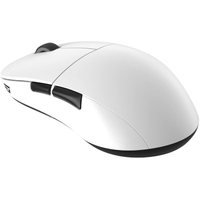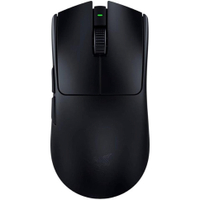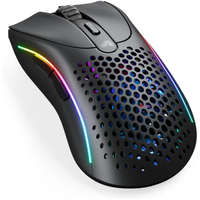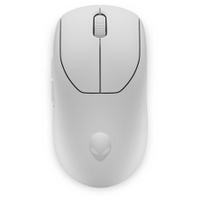Best wireless gaming mouse in 2024: These are the rodents I love getting my mitts on
Let go of the tethers and embrace the freedom of living life cable-free.
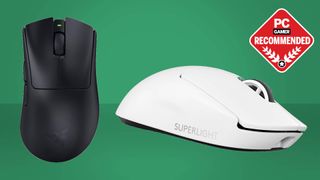
Wireless gaming mice deliver the precision of the best gaming mouse without the hassle of wires. No drag, no tugging on the cable when it gets caught under the corner of your monitor, just cable-free action to suit your gaming style. And right now the best wireless gaming mouse is the Razer Deathadder V3 HyperSpeed, thanks to its impeccable sensor, fantastic battery life, and significantly cheaper cost compared to the Pro.
Yes, it's cheaper than the DeathAdder V3 Pro, but it still costs a pretty penny. If you're watching your pennies, the best budget wireless gaming mouse is Logitech's G305 Lightspeed. It doesn't have lots of features but it doesn't have a high price tag, either. Deciding which model to buy should be based on the same criteria as it would be when buying a wired gaming mouse, such as the number of buttons you need and how light or heavy you want it to be. There are a few wireless-specific questions you'll need to ask though, like the type of connection and battery life.
The PCG team has tested all the best wireless gaming mouse wannabes so you can make an informed decision. And if you're looking to go wireless across the board, check out our lists of the best wireless gaming keyboards and best wireless headsets.

Dave has been mousing since the grinty ball days of the Amiga and was converted to the claw grip the moment he played Shareware Doom for the first time. Having professionally flung them around his test desk for the best part of twenty years he knows what makes a good wireless mouse, what a responsive gaming mouse needs to be, and just how many buttons you really need on your PC's rodent.
The quick list

The best overall
Tetherless and tireless, the Deathadder V3 HyperSpeed is a fantastic evolution of a beloved mouse design. With an impressive sensor and great wireless performance, there's not much to complain about. And it's a fair chunk cheaper than the V3 Pro.
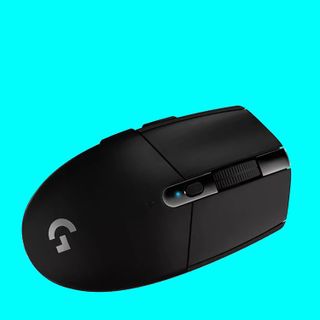
The best budget
A superb back-to-basics gaming mouse, the G305 Lightspeed is a super affordable way to nab Logitech's best sensor yet. It's not a complex mouse, but it will last ages on a single AA battery, and it's as light as anything.

The best lightweight
Shaving off a few more grams from the previous G Pro X model, this Superlight 2 is both comfortable to use and very quick to aim. A tad bland but a twitch-shooter's delight.

The best competitive
This is one of the lightest rodents you'll find on the market today, and for something so light and well-built it doesn't cost too much, either. Throw in a great, responsive sensor and you have a cracking mouse for esports gaming.
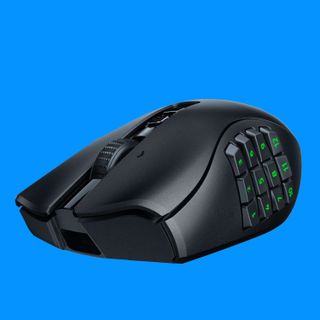
The best MMO
Well kitted out, the Naga Pro is a snake of many faces. Literally, you can swap out the side panel for the optimum button arrangement for assigning your quick actions, and although it's a chonker of a mouse, it's easily the most versatile.
Recent updates
This article was updated on September 5, 2024 to check we still have the best picks listed. We're confident these picks reflect the best of the best of wireless gaming mice today.
The best wireless gaming mouse





1. Razer DeathAdder V3 HyperSpeed
Our expert review:
Specifications
Reasons to buy
Reasons to avoid
✅ You want a great gaming mouse for a reasonable price: No unnecessary RGB, ultra-high polling rate, or ridiculously high DPI limit. Just a stellar gaming mouse for a very good price.
❌ You want a mouse primarily for office work: This mouse has loud buttons and a clunky wheel which might annoy some when not gaming.
The DeathAdder V3 HyperSpeed is the best wireless gaming mouse you can buy because it takes everything most important about the DeathAdder V3 Pro, simplifies it, and slaps on a much cheaper price tag.
DeathAdder is such a staple name in the world of PC gaming that it's little surprise one of Razer's latest iterations on the beloved mouse has ended up on this list, featuring its iconic curvature and all. DeathAdder's been around for decades, and this V3 HyperSpeed brings it back to its roots, perfecting the fundamentals: Great shape, build quality, and performance.
DeathAdders have a special place among the PC Gamer hardware team specifically, too. Some of us used the original almost two decades ago, and it's saying something that the name's still going and new iterations still offer such stellar quality today.
Enough about DeathAdders in general, though, what about this one? Well, The V3 Pro was our previous pick for the best wireless gaming mouse, until this HyperSpeed version pipped it from the top spot. In his review, Nick Evanson found the HyperSpeed model to be well worth the sacrifices for its much more affordable price tag.
Sure, it doesn't go up to 8 kHz polling like the V3 Pro, but most gamers won't need more than the HyperSpeed's 1 kHz anyway. Ditto its slightly lower sensor specs. These cutbacks are well worth the circa 40% saving compared to the Pro version. And on the plus side, the HyperSpeed version is actually lighter at 55 g vs the Pro's 63 g.
The only real downside that we can find to this thing is that it's a fingerprint magnet, and even that's not much of a downside relative to the competition because, well, a lot of the other best wireless gaming mice also seem to collect DNA quicker than crime scene investigators.
The DeathAdder V3 HyperSpeed is, at the end of the day, a wireless gaming mouse that should satisfy most gamers for a very reasonable cost. It's mighty comfortable (provided you're a right-hander, as it's not ambidextrous), mighty responsive, and its 100 hr battery life is nothing to sniff at, either. We'd recommend it to pretty much any gamer in a heartbeat.
Read our full Razer DeathAdder V3 HyperSpeed review.
The best budget wireless gaming mouse



2. Logitech G305 Lightspeed
Our expert review:
Specifications
Reasons to buy
Reasons to avoid
✅ You want a gaming mouse that's affordable but still great: Logitech has done an excellent job at balancing price and features with the G305, and you might never want for anything better.
❌ You want something that feels really plush: The low price comes at a cost and that's the feel of the materials. At least it doesn't lack features.
With the Logitech G305 Lightspeed, Logitech has created the best budget wireless gaming mouse: A high-performance peripheral that doesn't cost the earth. Its mid-range price has it competing against some great wired mice, but there's no compromise in performance or design.
The G305 uses Logitech's Hero sensor, an iteration of the fantastic sensor Logitech's best mouses, from the classic G502 down to the G Pro X Superlight. It can last more than 200 hours on a single AA battery (which helps keep the cost down vs. being rechargeable).
The small wireless dongle can be stored inside the body of the mouse, but critically, the left- and right-click buttons are separate pieces from the removable palm rest, ensuring a reliable and satisfying click.
The shape of the G305 is based on a small, ambidextrous design Logitech has been using for years. While components like the scroll wheel and buttons don't feel as premium as those in the G502, they're still far better than anything you'll find in a cheap gaming mouse. The quality and performance of the G305 are killer features for its price.
The best lightweight wireless gaming mouse






Specifications
Reasons to buy
Reasons to avoid
✅ You feel the need, the need for speed: The microscopic weight makes it a breeze to whip this mouse about your desk, perfect for twitch-style gaming.
❌ You want a decent wheel button: With everything else so good, it's a shame the wheel button is so dull and heavy. Yuck.
The best lightweight wireless gaming mouse used to be the Logitech G Pro X Superlight. Well, it still is, except the slot has been taken over by its successor: The Superlight 2.
At just 2.12 oz (60 g) in weight, this mouse will just fly across your mouse pad and Logitech hasn't cheated to get it this nimble, either. No holes, no flimsy materials, just good old-fashioned design and engineering. The speed is bolstered by two large PTFE pads on the base and the Superlight 2 excels in fast-paced shooters.
The Hero 2 sensor takes plenty of credit for this, as well, and with a maximum of 32,000 DPI you'll be able to set the mouse so that your games will whip about at the merest hint of wrist movement. Couple with a 2,000 Hz polling rate, hybrid optical-mechanical switches, and a 95 hour battery life, and you'll be in gaming nirvana.
It's not perfect, though. While the middle wheel is glorious to scroll, the button beneath it is heavy and dull, with a very muddy feel to it. At least it and the two side buttons are quiet, unlike the main ones, which are seriously loud. Perhaps too loud, for some folks.
And then there's the G Hub app, which you have to install if you want to change the DPI or set up any macros. It's not especially easy to use and it could take you a good while to master even the basics. It's certainly something for Logitech to work on.
But the limited features and mushy middle button are only small concerns. Fundamentally, the G Pro X Superlight 2 is a superb, lightweight wireless gaming mouse and it will appeal to a whole range of keen PC gamers.
Read our full Logitech G Pro X Superlight 2 review.
The best wireless gaming mouse for competitive gaming




4. Turtle Beach Burst II Air
Our expert review:
Specifications
Reasons to buy
Reasons to avoid
✅ You want ultra-lightweight: For competitive gaming, having a lightweight mouse is a must, and it doesn't get much ligher than this at 47 g.
❌ You want something fancy: You have to sacrifice quite a lot to get a mouse so light and responsive for competitive gaming, so don't expect any fancy features or RGB lighting with this mouse.
If you want a wireless gaming mouse for competitive gaming, you want something ultra-light and ultra-responsive, and the Turtle Beach Burst II Air certainly delivers on these fronts. Yes, there are better lightweight wireless mice such as the Logitech G Pro X Superlight 2, but none that are as light as this and as good for competitive gaming.
You see, the Burst II Air isn't an all-rounder—we doubt you'd want it for MMO gaming or for office work—but it is a stellar gaming mouse for esports. Primarily because of its measly 47 g weight, which is lighter than pretty much any mouse on the market. A weight, I might add, it somehow manages to achieve while remaining pretty solid in the shell department.
A mouse as light as this should (once you get used to it) make aiming easier, whether that's the long-armed swoops of Counter-Strike aiming or the wrist-flicks of fast-paced shooters. Its sensor can keep up with all this, too, because it's a very responsive little rodent, capable of up to 26,000 DPI (and who, even in the competitive scene, goes that high, really?).
That's pretty much it for the Burst II Air—it keeps things simple with a super-lightweight but solid build, a responsive, reliable sensor, and a very long-lasting battery. Oh, and its software, too. No bloaty nonsense there, either, just straightforward, intuitive settings and sliders.
The only real downside to this mouse is it's a little prone to picking up fingerprints. But honestly (even if annoyingly), what mouse isn't, these days? I'm sure competitive gamers will take the speed of this thing over something spotless, and who can blame them? It's a cracking mouse for the price.
Read our full Turtle Beach Burst II Air review.
The best MMO wireless gaming mouse




Specifications
Reasons to buy
Reasons to avoid
✅ You want a mouse that can be customised just right: The modular sides, with a raft of buttons on tap, make the Naga Pro ideal for setting up quick-action macros.
❌ You don't like a big, heavy mouse: All those buttons and optional side plates add to the weight and size, and there's no getting around the fact that this is chunky mouse.
The Razer Naga Pro is the best MMO/MOBA wireless gaming mouse and easily beats the previous, long-standing champion: The Naga Trinity. Topping the list of improvements are the low latency, HyperSpeed 2.4G and Bluetooth connection, the fast-tracking, 20,000 DPI sensor, and the optical button switches.
Yes, the Razer Naga V2 Pro is out now, but the Naga Pro is much cheaper and doesn't offer too much less, to be honest. The customisable scroll wheel is probably the biggest change, and we think most gamers will prefer to opt for the cheaper mouse instead.
In the case of the latter, they're very fast and thanks to the reduction in the number of moving parts, they'll last for up to 70 million clicks. Buttons are, of course, the main feature of the Naga Pro, as the three hot-swappable side plates offer two, six, and 12 additional buttons apiece.
They'd all be for naught if they were difficult to remap and program, but Razer's Synapse app makes the whole process child's play. Just point and click to do simple keyboard shortcuts, all the way through to complex, multi-step macros for your favourite MMO/MBO games.
And despite all this technical wizardry, battery life just isn't a concern. The 150 hours of claimed lifespan is very accurate, so you'll get weeks of heavy use out of it before you even need to think about recharging the battery.
What you might not like is the weight and size, especially with the 12 button plate attached. At 4.13 ounces, 117 g, the Naga Pro takes some getting used to and you may need to adapt how you hold your mouse. At least the contoured buttons and textured rubber grips make it relatively easy to firmly grasp the mouse between your thumb and pinky.
Heftiness aside and steep price aside, there's little else to really complain about. If you want speed, accuracy, and masses of versatility, then the Razer Naga Pro may well just be your perfect wireless gaming mouse.
Read our full Razer Naga Pro review.
Also tested
The Makalu Max is almost a great gaming mouse, but I find the wireless experience frustrating in a way its rivals aren't. The customisation options are great, it feels comfortable in the hand, and the sensor is reliable and accurate, but it's just a little short of being the full package.
PC Gamer score: 74%
Read our full Mountain Makalu Max review.
A humble, solid pointer that’s silky smooth on your mat. The XM2we is just a little expensive against the competition.
PC Gamer score: 70%
Read our full Endgame Gear XM2we review.
HyperX Pulsefire Haste 2 Wireless
The HyperX Haste 2 brings you the performance and battery life you want in a lightweight wireless gaming mouse. The $90 price tag is also good enough to surpass some of its software woes.
PC Gamer score: 73%
Read our full HyperX Pulsefire Haste 2 Wireless review.
This mouse was previously our pick for the best wireless gaming mouse, but we reckon the HyperSpeed version is better value. Still, if you're happy spending a little more, the V3 Pro certainly won't disappoint.
PC Gamer score: 89%
Read our full Razer DeathAdder V3 Pro review.
A snappy sensor and great response make this mouse a great choice for competitive gamers who are looking for a little extra aesthetically and feature-wise. Its surprisingly reasonable price tag doesn't go amiss, either.
PC Gamer score: 84%
Read our full Glorious Model O 2 Wireless review.
Glorious Model D 2 Pro 4K/8KHz Edition
This mouse is comfy, lightweight, and has a good sensor. However, in our testing, we experienced some dropouts with the wireless connection.
PC Gamer score: 66%
Read our full Glorious Model D 2 Pro 4K/8KHz Edition review.
The Viper V3 Pro is a superb pick for esports gaming given its 54 g weight and up to 8 kHz polling. It's a bit of a fingerprint magnet, though, and it isn't as light as our pick for best competitive wireless gaming mouse.
PC Gamer score: 84%
Read our full Razer Viper V3 Pro review.
Featuring an updated sensor, the second iteration of Glorious's Model D mouse is similarly comfy and performs well. However, it isn't the lightest and we think there are better lightweight options such as the Superlight V2.
PC Gamer score: 75%
Read our full Glorious Model D 2 review.
The Corsair M75 Wireless is a great mouse for lefties. It's genuinely ambidextrous because you can move its buttons from one side to the other. Apart from that, though, it's nothing to write home about.
PC Gamer score: 83%
Read our full Corsair M75 Wireless review.
This mouse is simply not worth the cost, in our eyes. It features a nice clean design and responsive sensor, but it has cheap-feeling side buttons and there are much better options for the high price tag. Not to mention, on the darker versions of the mouse the Alienware logo looks a little too much like a cheap sticker for my liking.
PC Gamer score: 73%
Read our full Alienware Pro Wireless gaming mose review.
Where to find the best deals
Where are the best gaming mouse deals?
In the US:
- Amazon - Often some savings on PC gaming peripherals
- Walmart - Usually some good savings on mice
- Newegg - Big brand gaming mice for cheap
- Best Buy - Great place to look for a cheap gaming mouse
In the UK:
- Overclockers - Plenty of peripherals to choose from
- Scan - Lots of sales events including gaming mice
- Box - Deals on gaming mice and more
Wireless gaming mouse FAQ
Best wireless gaming mouse FAQ
PC Gamer's got your back
What's the main reason to choose wireless over wired?
Today, most of the conventional wisdom about wireless gaming mice is wrong. Some wireless mice are still more expensive, and poor ones could suck their batteries dry in the middle of a match or lag thanks to a weak wireless receiver. But the best wireless gaming mice perform almost indistinguishably from wired ones, without a hint of the traditional lag or stutter to be found.
Do pro gamers use wireless gaming mice?
Modern wireless connections, such as those created by Logitech and Razer, deliver no discernible difference between their wired and wireless mice brethren when it comes to gaming latency. Reportedly both Ninja and Shroud use a Logitech G Pro X Superlight mouse, so there's clearly nothing wrong with the fact that it's wireless.
How does a wireless mouse connect to my PC?
Most wireless mice offer both 2.4G wireless connections, which will most often require a dedicated USB device, or they'll use Bluetooth. Bluetooth is more widely compatible with a range of devices, however, it usually adds latency to the connection, whereas a 2.4G wireless connection has next to none. This makes it the preferable connection method for gaming.
How we test gaming mice
We've used enough gaming mice to have a good feel for build quality, button placement, and shape. Our opinions on those aspects of mouse design are naturally subjective, but they're also well-informed. The tricky part of testing gaming mice is analyzing the other part of the equation: tracking performance, jitter, angle snapping, acceleration, and perfect control speed, and determining how each of those issues affects the experience of using a mouse.
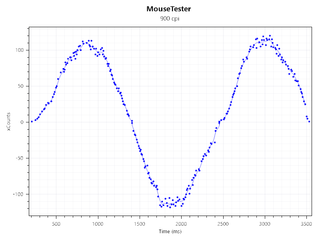
For that, applications such as Mouse Tester come in handy. We used this software to see if we could spot any glaring issues with the mice we used. In every gaming mouse we tested, though, angle snapping and acceleration were disabled in the mouse drivers by default (though a mouse can still exhibit acceleration from issues with the sensor itself) and never encountered any glaring performance issues.
For gaming, we primarily test mice with Destiny 2 and Apex Legends and twitchier shooters like Quake Champions to see how our performance stacks up against other mice. We scrutinize the cursor movement and responsiveness for lag, jitter, and other issues.
We use each mouse with its wireless receiver plugged into close by USB port, giving it the best possible wireless situation to work with. We also tested the wireless receivers plugged into our test system a few feet away with my legs in between, increasing the opportunity for lag and interference.
Wireless gaming mouse jargon buster
Grip refers to how you hold the mouse. The most common grips are palm, claw, and fingertip. Here's a good example of how each grip works.
CPI stands for counts per inch, or how many times the mouse sensor will read its tracking surface, aka your mousepad, for every inch it’s moved. This is commonly referred to as DPI, but CPI is a more accurate term. The lower the CPI, the further you have to move the mouse to move the cursor on the screen.
Jitter refers to an inaccuracy in a mouse sensor reading the surface it’s tracking. Jitter often occurs at higher mouse movement speeds or higher CPIs. Jitter can make your cursor jump erratically, and even slight jitter could wreck a shot in an FPS or make you misclick on a unit in an RTS.
Angle snapping, also called prediction, takes data from a mouse sensor and modifies the output to create smoother movements. For example, if you try to draw a horizontal line with your mouse, it won’t be perfect—you’ll make some subtle curves in the line, especially at higher sensitivities. Angle snapping smooths out those curves and gives you a straight line instead. This is generally bad because it means your cursor movements won’t match your hand’s movements 1:1, and angle snapping will not be useful in most games. Thankfully, almost all gaming mice have angle snapping disabled by default.
Acceleration is probably the most reviled, most scrutinized issue with gaming mouse sensors. When a mouse sensor exhibits acceleration, your cursor will move faster the faster you move the mouse; this is often considered bad because moving the mouse slowly six inches across a mousepad will move the cursor differently than moving the mouse rapidly same distance. This introduces variability that can be hard to predict.
Perfect control speed, or malfunction rate, refers to the speed at which the mouse can be moved while still tracking accurately. Most gaming mice will track extremely accurately when moved at slow speeds, but low CPI players will often move their mice large distances across the mousepads at very high speeds. At high speeds, especially at high CPIs, not all mouse sensors can retain their tracking accuracy. The point at which the sensors stop tracking accurately will differ between CPI levels.
IPS measures inches per second and the effective maximum tracking speed of any given sensor is rated too. Not to be confused with the gaming monitor panel type by the same name, the higher the IPS of any given mouse, the better it can keep up with high-speed movement and maintain accuracy.
Lift-off distance is still a popular metric in mouse enthusiast circles, though it does not affect most gamers. LOD refers to the height a mouse has to be raised before the sensor stops tracking its surface. Some gamers prefer a mouse with a very low lift-off distance because they play at very low sensitivity and often have to lift their mouse off the pad to "reset" it in a position where they can continue swiping. With a low LOD, the cursor will not be moved erratically when the mouse is lifted.
The biggest gaming news, reviews and hardware deals
Keep up to date with the most important stories and the best deals, as picked by the PC Gamer team.

Dave has been gaming since the days of Zaxxon and Lady Bug on the Colecovision, and code books for the Commodore Vic 20 (Death Race 2000!). He built his first gaming PC at the tender age of 16, and finally finished bug-fixing the Cyrix-based system around a year later. When he dropped it out of the window. He first started writing for Official PlayStation Magazine and Xbox World many decades ago, then moved onto PC Format full-time, then PC Gamer, TechRadar, and T3 among others. Now he's back, writing about the nightmarish graphics card market, CPUs with more cores than sense, gaming laptops hotter than the sun, and SSDs more capacious than a Cybertruck.
- Kizito Katawonga
- Jorge JimenezHardware writer, Human Pop-Tart
- Jacob RidleyManaging Editor, Hardware
Most Popular






